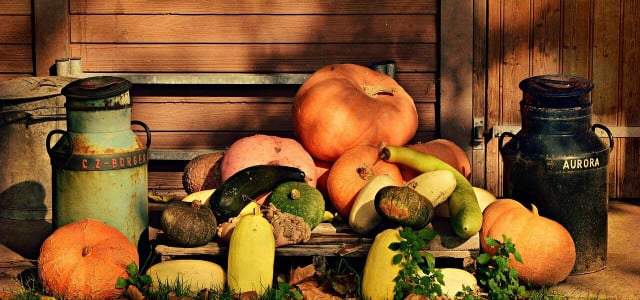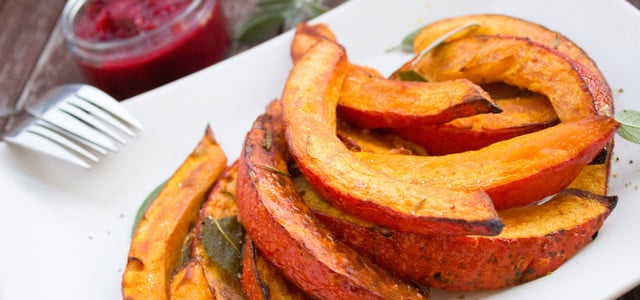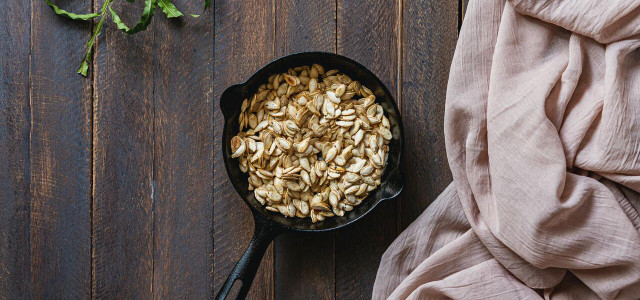With the year’s last loveliest smile of Fall fast upon us, this can mean only one thing, it’s pumpkin season. Regardless if you’re making a spooky Halloween jack-o-lantern or a delicious Thanksgiving pumpkin pie, this guide will show you how to plant pumpkins right in your own backyard. Let’s begin!
How to Plant Pumpkins at Home
Pumpkins are believed to have been cultivated in the Americas ever since 3,500 BC due to their versatility, making them one of the oldest known crops in the western world. Curiously enough, some indigenous people believed that they were even able to cure snakebites. In the modern age, they are a fantastic addition to any garden and relatively simple to grow and nurture. A member of the gourd family, they are incredibly nutritious and rich in vitamins.
By following the 10 steps of planting pumpkins with some patience and care, your pumpkin patch will be blooming in no time.
1. Buy some pumpkin seeds from a local store or supermarket.
2. Check the packet as it will detail how long on average it’ll take to produce full-grown pumpkins (different varieties require different times).
3. Find a space in your garden that receives full sunlight and where the soil drains well and has the right temperature of 70°F. This will ensure optimal growth.
4. Place the seeds 12-15 inches deep in the soil in rows or pumpkin hills. Be sure to plant no more than 4 or 5 pumpkin seeds per hill. Also, take care to space each hill 4-8 feet apart. For best results, mix a layer of organic manure or compost in with the seeds.
5. Pumpkins are very thirsty plants and require lots of water to thrive. However, avoid soaking the pumpkins and vines as they can rot. Therefore, water deeply and gently, one inch per week. Bear in mind that pumpkin leaves can look wilted even if the soil is moist, so resist the urge to overwater.
6. Within 5-10 days, your pumpkin seeds should germinate and emerge from the soil.
7. After a few pumpkins have formed, prune the fuzzy ends off of each vine, as this will halt vine growth and the plant can divert more energy to growing the fruit itself.
8. As the pumpkins develop, turn them gently to stimulate an even shape.
9. Be careful not to use any insecticide as these chemicals can harm important creepy crawlies and pollinators, and in turn prevent the plants from producing any pumpkins.
An additional aspect worth considering before you plant pumpkins in your garden is that pumpkins also require a lot of space for their vines to sprawl. These sprawling vines can travel quite far, therefore chose a spot at the edge of your garden where you can direct the vines to grow across your backyard. If you’re pushed for space, you can buy ‘bush variety pumpkins’ which grow in a more compressed space.
Planting in Rows vs. Hills
In comparison, when you know how to plant your pumpkin seeds, planting them in rows can be a slower yet nonetheless efficient way to plant them. This is due to the fact that the pumpkins aren’t competing for space and nutrients, therefore there’s less rick of the vines becoming tangled. This method can also produce bigger crops.
On the other hand, planting your pumpkins in hills can encourage the seeds to germinate as the soil can be warmer, meaning they can grow quicker from the get go. For some, this method might be more ideal perhaps due to spacing issues. However, bear in mind that seedlings can be transported somewhere else in your garden once they show signs of germinating.
When to Grow Pumpkins
As you can see from the guide on how to plant pumpkins, they’re a relatively straightforward fruit and easy to sustain if you have the right space. However, by now you may be wondering when is the best time to grow pumpkins.
On average, pumpkins require a longer growing period than other members of the gourd and squash families and will take between 75 to 100 days to fully grow. If you have your heart set on having pumpkins slightly before the Halloween season, plant your pumpkins by late May if you live in a northern state, or by mid-July if you live in a more temperate southern state.
Some varieties may need between 90 to 120 frost-free days to mature. When you first start planting pumpkins, your first flowers might not form the pumpkin fruit itself right away. Fret not, as this is perfectly normal as both the male and female blossoms need time to open, so patience is key.
How to Harvest Pumpkins
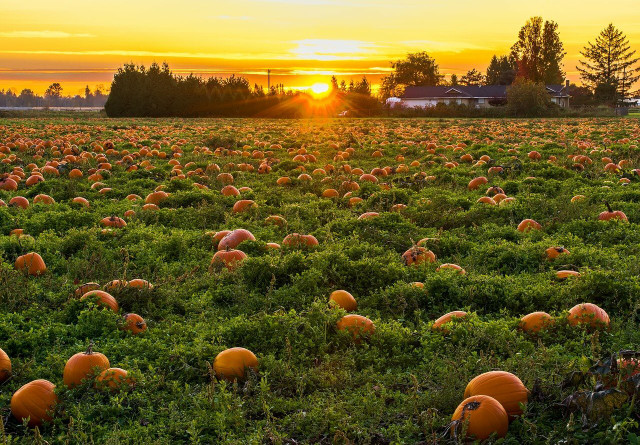
(Foto: CC0 / Pixabay / jameswheeler)
Let’s say you’ve followed our guide on how to plant pumpkins correctly, and now comes the time to reap the fruits of your labour (pardon the pun). How do you harvest the pumpkins once they’re fully mature? The list below should help you tell when your pumpkins are ready and how to harvest them successfully.
- A pumpkin is ripe for picking when the skin turns a strong, solid deep orange color (this will depend on the variety that you chose of course).
- Thump the pumpkin with your finger, does the rind feel hard? Does it sound hollow? To make sure, press your fingernail into the skin, does it resist puncture? If so, the pumpkin is right.
- Now your pumpkin is ready to harvest, cut the stem but leave 1-2 inches of it as it will give your pumpkin as it delays decay of the fruit. Cut with a sharp knife or pruners but take care not to tear the stem.
- Congratulations, now you have a fully-fledged and nutritious pumpkin to turn into a pie, soup, Jack-o-Lantern, or whatever your heart desires.
Different Varieties of Pumpkin
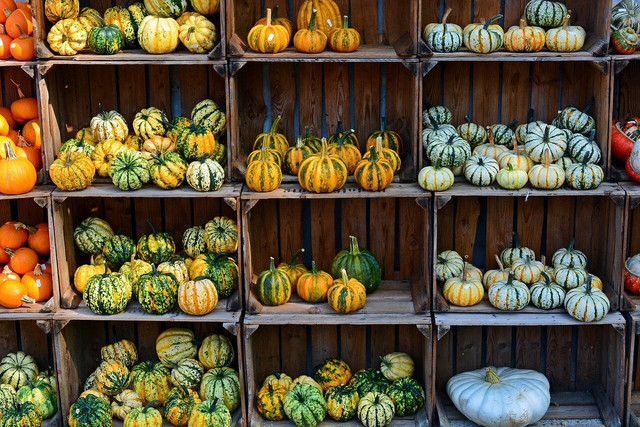


(Foto: CC0 / Pixabay / bernswaelz)
As we touched upon earlier, pumpkins can be delightfully diverse. Now that you know how to plant pumpkins, you’ll be happy to know that the possibilities seem endless. You can choose between orange pumpkins, white pumpkins, swirly multi-colored pumpkins, large pumpkins, or even miniature pumpkins, with a whole spectrum in-between.
To help fend off option paralysis, we’ve highlight varieties of pumpkin that are best for carving, and others that are best for culinary delights.
- Best pumpkin varieties for carving: The Autumn Gold variety makes a mean Jack-o-Lantern as does The Atlantic Giant variety which can grow to giant sizes as it retains a lot of water. If you’re looking for a smaller Jack-o-Lantern, then the Jack Be Little or Munchkin variety is a great choice for decoration. Generally speaking, these varieties taste a little blander which makes them better suited for carving.
- Best pumpkin varieties for the kitchen: If you’re looking to make a scrumptious pumpkin pie, then the Sugar Treat and Baby Bear varieties are a wonderful choice. If you’re planning on roasting your pumpkin or making it into a soup, then you can’t go wrong with the Cinderella or Cherokee Bush varieties. These pumpkin varieties have a sweeter flesh which makes them better suited for culinary dishes.
How to Store Pumpkins
When it comes to finding the right place at home for storing your pumpkins, there are a few things worth keeping in mind.
- After harvesting your pumpkins, they should be cured in the sun for roughly a week to toughen the skin.
- Pumpkins have an average shelf life of 8-12 weeks after harvesting.
- The ideal temperature to store them in is 55°F. Therefore any cool, dry room or pantry will suffice. They can also be stored in cellars if you have one.
- Pumpkin seeds have an incredibly long shelf life, they can last up to six years.
- During your storage, your pumpkin may shrink in size. Typically, pumpkins can lose up to a fifth of their original size. Nevertheless, they are still okay to be cooked.
- Pumpkins can also be canned or pureed and frozen, in which case they can last up to six months.
Pumpkin Recipe Ideas
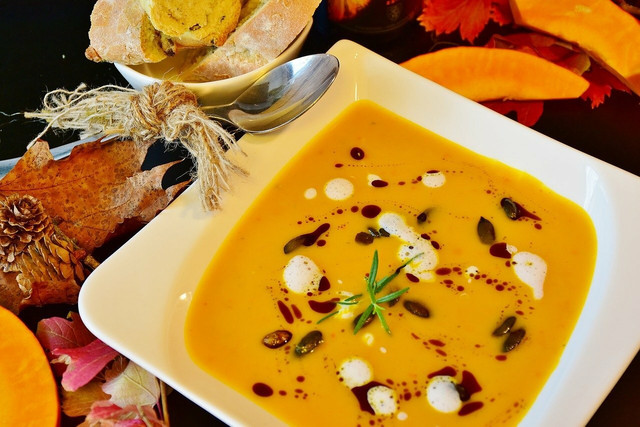


(Foto: CC0 / Pixabay / RitaE)
If you’re a first-time visitor to Utopia, then you’re in luck as we’ve covered the plethora of delights and delicacies that one can conjure up with pumpkins extensively on this site.
The pumpkin seeds themselves can make healthy snacks or be roasted and seasoned for a crunchy snack.
Also, the pumpkin flesh and pulp can be used in a multitude of ways. If you have a sweet tooth you can use pumpkin flesh to make pumpkin cheesecakes, pies, muffins, cookies, or brownies. If you’re seeking something a little more savory, you can mash your pumpkins as you would with potatoes, or make soups, bread, or simply use pumpkins to enhance many dishes.
If smoothies are more your thing, then be sure to check out our DIY Pumpkin Smoothie recipe and discover how to make a simple, low-calorie substitute for pumpkin-flavored coffee drinks.
Read more:
- 10 Flowering Vegetables You Can Grow in Your Garden
- 10 Tips for Reducing Food Waste
- How to Grow Sweet Potatoes – All You Need to Know
Important Information regarding Health-related Topics.
** Links to retailers marked with ** or underlined orange are partially partner links: If you buy here, you actively support Utopia.org, because we will receive a small part of the sales proceeds. More info.Do you like this post?






